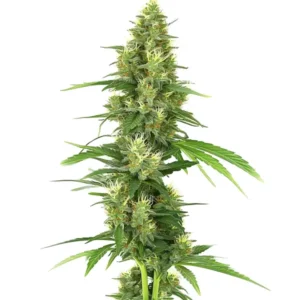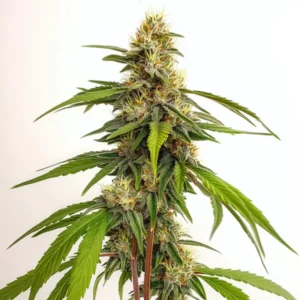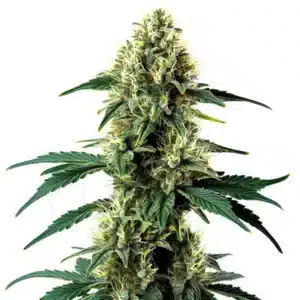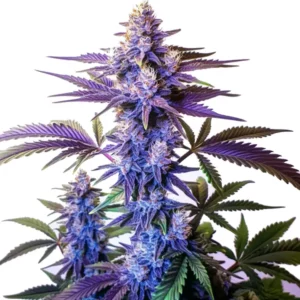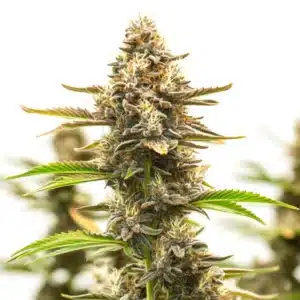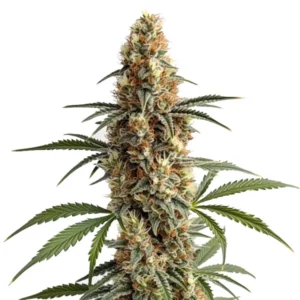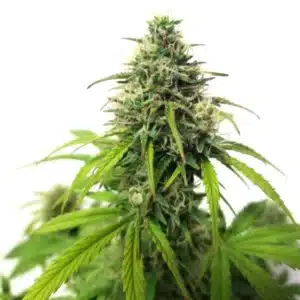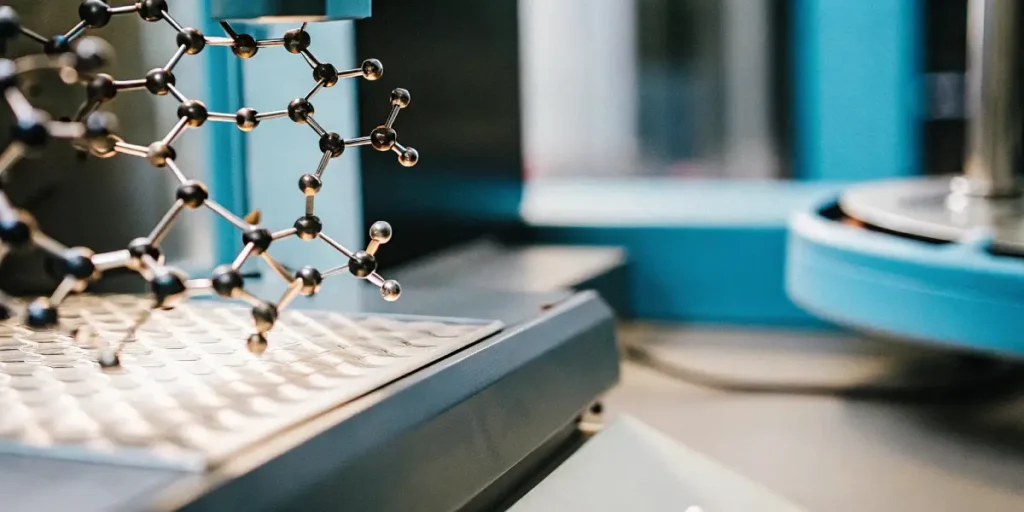
CBGA to THCA Enzyme Reaction
The CBGA to THCA enzyme reaction is a fascinating process that plays a crucial role in the development of cannabis plants. This reaction involves the conversion of Cannabigerolic Acid (CBGA) into Tetrahydrocannabinolic Acid (THCA), the precursor to THC, the compound responsible for cannabis’s psychoactive effects. Knowing this conversion is key for both novice and seasoned growers looking to optimize their yields and potency.
In the world of cannabis cultivation, enzymes are nature’s little helpers, driving the CBGA to THCA biosynthesis process. Enzyme catalysis in CBGA to THCA conversion allows for this transformation to occur efficiently. Without these enzymes, the plants wouldn’t be able to produce the THC that many users seek. The pathway of CBGA to THCA enzyme reaction is a marvel of natural chemistry.
Recommended Strains
Factors affecting CBGA to THCA transformation include environmental conditions and plant genetics. Variations in temperature, light, and humidity can impact the efficiency of the CBGA to THCA enzymatic reaction mechanism. For example, a strain like Gorilla Glue 4 from Blimburn Seeds may react differently under varying conditions compared to other strains, affecting its THC levels.
The Science Behind the Reaction
The pathway of CBGA to THCA enzyme reaction begins with CBGA, known as the “mother of all cannabinoids.” This compound serves as the starting point for the synthesis of several cannabinoids, including THCA. CBGA is produced in the plant’s trichomes, tiny glands on the surface of cannabis flowers, leaves, and stems.
Enzyme catalysis in CBGA to THCA conversion involves a specific enzyme called THCA synthase. This enzyme facilitates the transformation of CBGA into THCA by acting as a catalyst, speeding up the chemical reaction without being consumed in the process. This is similar to how yeast helps bread rise without being part of the final product.
The CBGA to THCA enzyme reaction is not only a crucial step in cannabinoid biosynthesis but also a key factor in determining the overall chemical profile of the cannabis plant. As the CBGA to THCA biosynthesis process unfolds, it sets the stage for the eventual production of THC, CBD, and other important cannabinoids. This intricate dance of enzymes and chemical compounds forms the backbone of cannabis’s unique properties.
Scientific studies continue to explore the finer details of the CBGA to THCA enzyme reaction, revealing new insights into how this transformation can be optimized. Researchers are particularly interested in knowing how different environmental and genetic factors can be manipulated to maximize THCA production. These findings could have significant implications for the future of cannabis cultivation, offering growers new strategies to enhance their crops.
Factors Influencing the Reaction
Various factors affect the CBGA to THCA transformation, impacting the overall potency and yield of cannabis plants. Environmental factors such as temperature and light play a significant role. Cooler temperatures can slow down the enzyme activity, whereas warmer conditions might enhance it, leading to higher THCA production.
Genetic factors also contribute to the efficiency of the CBGA to THCA enzymatic reaction mechanism. Different cannabis strains have varying levels of THCA synthase activity. For example, the Blue Dream strain from Blimburn Seeds might exhibit more robust enzyme activity than other strains, resulting in higher THC content.
Beyond temperature and genetics, factors affecting CBGA to THCA transformation also include the pH levels of the growing medium. A balanced pH can facilitate optimal enzyme activity, ensuring that the CBGA to THCA enzyme reaction proceeds smoothly. Growers often monitor and adjust pH levels to create an environment where enzymes can function efficiently.
Light exposure is another critical factor. While some strains may thrive under intense light conditions, others might require more moderate lighting to optimize the CBGA to THCA biosynthesis process. Knowing the specific needs of each strain can help growers tailor their cultivation techniques to achieve the best results.
Promos & Deals
Practical Applications for Growers
For cannabis growers, knowing the CBGA to THCA enzyme reaction can provide a competitive edge. By optimizing conditions that favor the transformation of CBGA to THCA, growers can enhance the potency of their crops. This involves adjusting environmental factors such as light, temperature, and humidity to create the perfect growing conditions.
Choosing the right strain is also crucial. Some strains naturally produce higher levels of THCA due to their genetic makeup. Strains like Green Crack from Blimburn Seeds are known for their potent effects, making them ideal for those seeking high THC levels. Selecting a strain with a strong enzymatic reaction mechanism can make all the difference in the final product.
Moreover, the CBGA to THCA enzymatic reaction mechanism can be influenced by the timing and method of harvesting. Growers who closely monitor trichome development can determine the optimal harvest time, ensuring that plants are harvested when THCA levels are at their peak. This attention to detail can result in a more potent and marketable product.
Advanced growers might also experiment with nutrient management to support the CBGA to THCA biosynthesis process. Providing plants with the right balance of nutrients can enhance enzyme activity, promoting a more efficient conversion of CBGA to THCA. This holistic approach to cultivation can lead to significant improvements in both yield and quality.
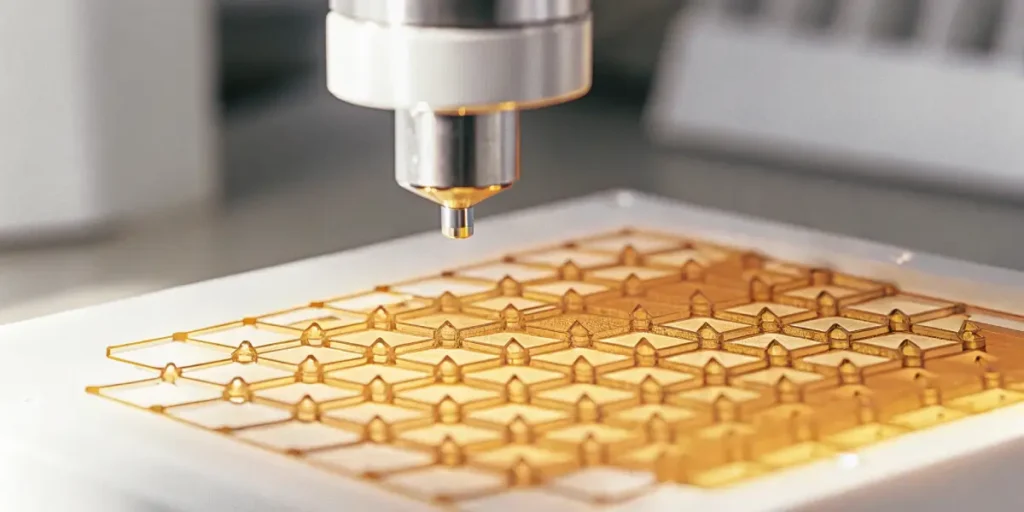
Real-life Growing Tips
Growers can experiment with different environmental conditions to see how they affect the CBGA to THCA transformation. For instance, gradually increasing the temperature during the flowering stage can boost enzyme activity, leading to higher THCA production. However, it’s essential to monitor the plants closely to avoid stress that could hinder growth.
Another tip is to invest in quality seeds from reputable sources like Blimbrun Seeds. High-quality seeds ensure that the plants have the genetic potential for a strong CBGA to THCA enzymatic reaction mechanism. This can result in more potent and consistent harvests.
In addition to temperature and seed quality, the choice of growing medium can play a significant role in the CBGA to THCA enzyme reaction. Soil, hydroponics, and other mediums each have unique characteristics that can influence the efficiency of enzyme catalysis in CBGA to THCA conversion. Experimenting with different mediums can reveal the best fit for each strain.
Regularly testing the cannabinoid content of plants throughout their growth cycle can provide valuable insights into the CBGA to THCA biosynthesis process. By knowing how various factors affect cannabinoid levels, growers can make informed decisions to enhance their cultivation practices and produce superior cannabis products.
FAQs
What is the CBGA to THCA enzyme reaction?
The CBGA to THCA enzyme reaction is a natural process where the compound CBGA is converted into THCA, which is the precursor to THC. This transformation is crucial for producing the psychoactive effects associated with cannabis. The reaction is facilitated by an enzyme called THCA synthase, which acts as a catalyst to speed up the conversion.
Growers and researchers alike are interested in this process because it determines the potency and effectiveness of the cannabis plant. By knowing and optimizing this reaction, growers can enhance the quality and yield of their crops, leading to better products for consumers.
The CBGA to THCA enzyme reaction is also a focal point for scientific research aimed at improving cannabis cultivation techniques. By dissecting the intricacies of this reaction, scientists hope to unlock new methods to boost cannabinoid production, ultimately benefiting growers and consumers alike.
As the cannabis industry continues to evolve, the CBGA to THCA biosynthesis process remains at the heart of efforts to develop strains with specific cannabinoid profiles. This targeted approach allows for the creation of products tailored to various consumer preferences, expanding the possibilities within the market.
How does enzyme catalysis work in CBGA to THCA conversion?
Enzyme catalysis in CBGA to THCA conversion involves a specific enzyme that speeds up the reaction without being consumed. In this case, THCA synthase is the enzyme that facilitates the transformation of CBGA into THCA. This process is akin to how enzymes in our bodies help digest food more efficiently.
The enzyme lowers the activation energy required for the conversion, allowing the reaction to occur more rapidly. This efficient conversion is vital for the production of THCA, which eventually becomes THC after decarboxylation, providing the desired effects of cannabis.
Knowing enzyme catalysis in CBGA to THCA conversion is essential for those looking to maximize the potential of their cannabis crops. By leveraging the power of enzymes, growers can achieve more consistent results and produce higher-quality products tailored to consumer demands.
Research into enzyme catalysis also opens the door to potential innovations in cannabis breeding and cultivation. By manipulating the enzymes involved in the CBGA to THCA biosynthesis process, scientists aim to develop new strains with enhanced cannabinoid profiles, offering exciting opportunities for the industry.
What factors affect the CBGA to THCA transformation?
Several factors can influence the CBGA to THCA transformation, including environmental conditions, plant genetics, and growth stage. Temperature, light, and humidity are crucial environmental factors that can either enhance or inhibit enzyme activity. For instance, warmer temperatures often increase enzyme activity, leading to higher THCA production.
Genetic factors also play a significant role, as different strains have varying levels of THCA synthase activity. Choosing the right strain with a strong enzymatic reaction mechanism, like those available from Blimburn Seeds, can enhance the overall potency and yield of the cannabis plant.
In addition to these factors, the timing of nutrient application can significantly impact the CBGA to THCA enzyme reaction. Providing the right nutrients at critical growth stages can enhance enzyme activity, resulting in a more efficient conversion process and ultimately higher THCA levels.
Additionally, the choice of cultivation method, whether organic or conventional, can influence the factors affecting CBGA to THCA transformation. Different methods may offer unique advantages in terms of enzyme activity and cannabinoid production, allowing growers to tailor their approach to suit specific goals and preferences.
Why is the CBGA to THCA biosynthesis process important for growers?
The CBGA to THCA biosynthesis process is crucial for growers because it directly impacts the potency and quality of the final cannabis product. By knowing and optimizing this process, growers can increase THC levels in their plants, leading to more potent effects for consumers.
Additionally, mastering this biosynthesis process allows growers to produce consistent and high-quality harvests. This consistency is essential for maintaining a good reputation in the competitive cannabis market, where consumers expect reliable and effective products.
The CBGA to THCA enzyme reaction is also a key factor in the economic success of cannabis cultivation. By maximizing the efficiency of this process, growers can increase their yield and profitability, making it a critical area of focus for those looking to thrive in the industry.
Furthermore, the insights gained from studying the CBGA to THCA biosynthesis process can inform breeding programs aimed at developing new strains with unique cannabinoid profiles. These innovations have the potential to capture emerging market trends and meet diverse consumer needs, positioning growers at the forefront of the evolving cannabis landscape.
How can growers optimize the CBGA to THCA enzyme reaction?
Growers can optimize the CBGA to THCA enzyme reaction by carefully controlling environmental conditions like temperature, light, and humidity. Adjusting these factors to suit the specific needs of the strain being grown can significantly enhance THCA production.
Furthermore, selecting high-quality seeds from trusted sources such as Blimburn Seeds ensures that the plants have the genetic potential for a strong enzymatic reaction. This, combined with proper timing during harvesting, can maximize the efficiency of the CBGA to THCA transformation.
Incorporating advanced growing techniques, such as using CO2 enrichment, can further enhance the CBGA to THCA enzyme reaction. Increased CO2 levels can stimulate plant growth and enzyme activity, leading to a more efficient biosynthesis process and increased cannabinoid production.
Finally, regular monitoring and adaptation of cultivation practices in response to ongoing observations can help growers fine-tune their approach to the CBGA to THCA enzyme reaction. This dynamic strategy allows for continuous improvement and optimization, ensuring that growers remain competitive in a rapidly changing market.


